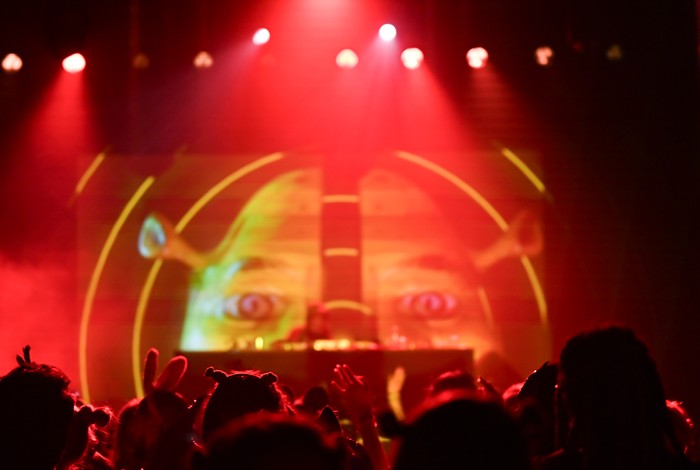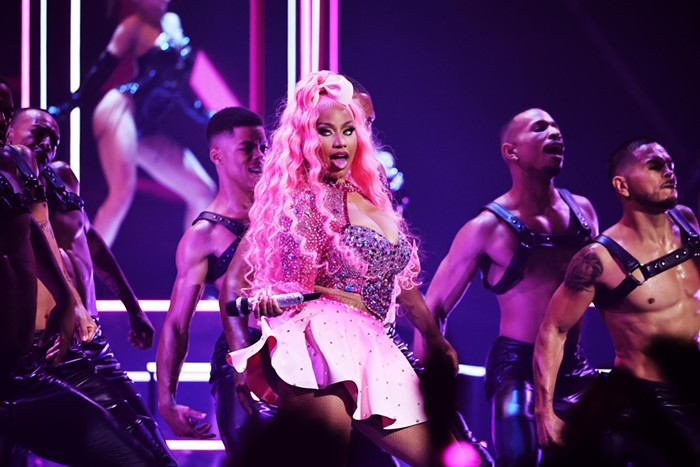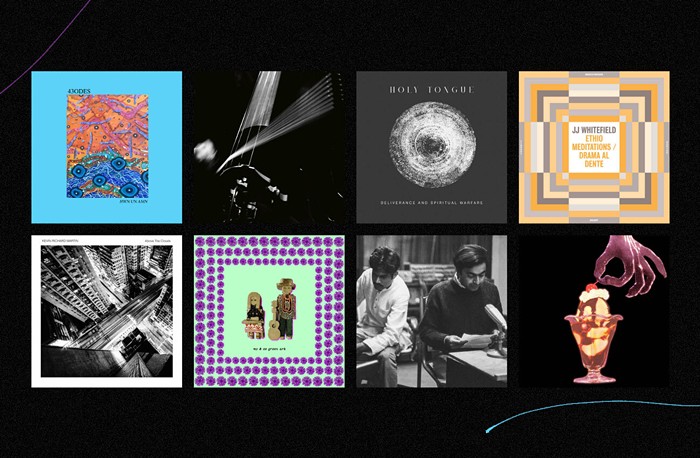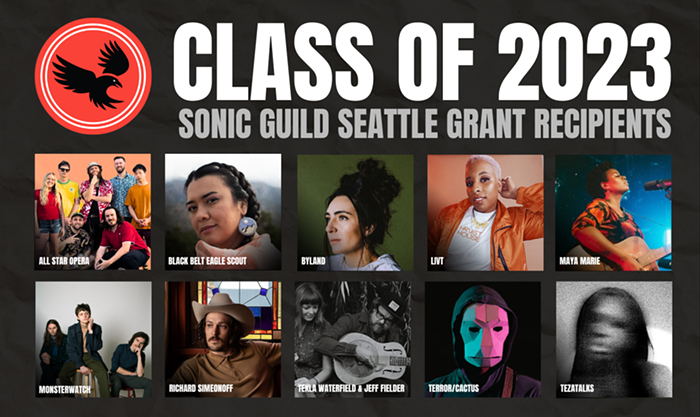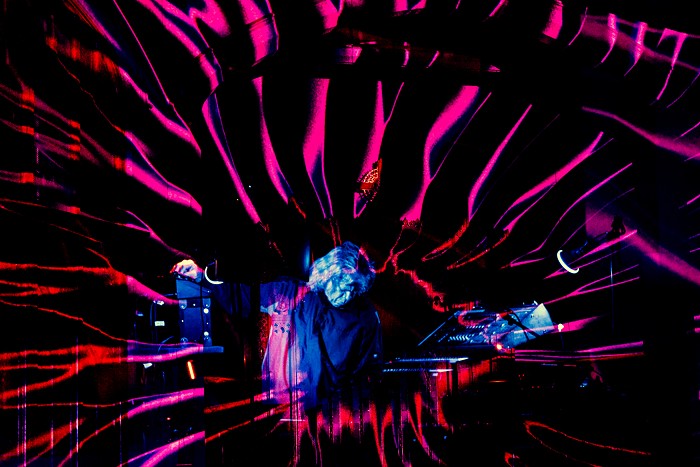This year was, for the most part, a good year for local hiphop, though we saw no new acts escaping the gravity of the 206 and entering the orbit of the big time. Macklemore dominated the year, of course, and we watched his fame stabilize in a region of stardom that very few humans reach or can even comprehend. Indeed, it is a region so far from reality for almost all humans that it has more in common with the fantastic stuff of dreams than the physically hard things we see daily with our own eyes. To use words from R. Kelly's "Did You Ever Think": Did you ever think that you would be this rich? Did you ever think that you would have these hits?... Did you ever think that you would sell out tours? Have a show with fifty million viewers? Macklemore should do a cover of that tune.
But back on earth—back on the streets, back in the home studios on Beacon Hill, Capitol Hill, and the University District—some new and established local rappers and producers generated a good number of solid LPs and EPs, my favorite five of which are listed below. But before naming them, I want to quickly bring up something that my man OCnotes recently tweeted: He does not want to be recognized as a hiphop producer, but only and simply as a musician. This declaration surprised me because, for one, I do feel that musicians are very different from hiphop producers, and two, hiphop production is as serious an art as the production of what is traditionally identified as music. Why would OCnotes not want to be known as a hiphop producer? What's wrong with the methods, processes, and aesthetics of hiphop production? I think the statement may not pertain to the older arguments about whether hiphop is music or not, but is an expression of an emerging mood among many in the 206 community. More and more producers are working on projects that are hard to define or have little to no relationship with what is commonly known or understood to be hiphop. In a sense, OCnotes just wants to be honest about this fact. He is not making rap, jazz, indie rock, or house. He is just making music.
I bring this up because one of the most interesting developments of 2013 was the rise of the Black Weirdo parties organized and curated by THEESatisfaction—Stasia "Stas" Irons and Catherine "Cat" Harris-White. I think these parties capture this new openness, the lack of limits, this break with stable cultural structures of hiphop. OCnotes—who has performed at Black Weirdo parties and was selected by Stas and Cat as the third "Black Weirdo of the Week"—is all about confounding expectations and achieving a condition of radical musical freedom. He is black and, according to the current stable definitions of what is and what is not musically black, he is weird.
But 2013 was also the year that saw the rise of a group composed of three rappers who do not make rap music at all: the Flavr Blue. Rappers Hollis Wong-Wear, Lace Cadence, and Parker Joe have deep roots in the 206 community—Hollis was one half of Canary Sing, Lace rocked with Clockwork, and Parker has not entirely broken with the rap crew he helped establish a few years back, State of the Artist—but there is no hiphop on the Flavr Blue's 2012 debut album, Pisces, or the EP they released this year, Bright Vices. I feel there is a connection or correspondence between OCnotes' assertion about his status as an artist, the radical openness of Black Weirdo parties, and the hiphop-less hiphop of the Flavr Blue. The 206 might be undoing what is known and understood for the purpose of creating a space for the arrival of something that has no name, no history. What will happen in 2014? Who knows? What I do know is what happened in 2013, and the best album of the year is Nacho Picasso's High & Mighty.
1. High & Mighty
by Nacho Picasso
Released on the very last day of October, High & Mighty has three things that make it the top record of the year. First, the production on this album is just solid. From the first track (the darkling "Crime Waves") to the last (the brilliantly twisted "Sounds Like the Outro"), the music keeps the listener engaged and pleased—High & Mighty does not have a single weak or lazy beat. Second, it has a unified sound that corresponds with reason three: Nacho Picasso's rap mode. His rhymes pulsate just above the subliminal, often spiral into the surreal and pornographic, are often packed with references to deep and dark parts of popular culture, and imagine a nocturnal 206—a 206 that never sleeps but is also not really awake, existing in the twilight of the two states. High & Mighty is a record Seattle can be proud of.
2. Tacos on Broadway
by Brothers from Another
The two young rappers, Tiglo and Cole, of Brother from Another had a very good year for three reasons. First, they were correctly selected by XXL magazine as one of Seattle's "rappers you should know," and second, the EP Tacos on Broadway, which featured production by one of my favorite beat-creators in town, Nima Skeemz (he not only did beats for one of the best tracks of the year, Raz Simone's "Sometimes I Don't," but also the local hiphop classic by Sol, "Stage Dive"), has a consistently crisp and chill sound. When listening to this EP, one feels that Tiglo and Cole are in no rush to become famous, but are more concerned with getting their sound and rap mode down. Third, they also released the best hiphop video of the year for "Pike & Broadway," which expressed new urban values for the hiphop culture of the future: the pleasures of cycling around the city and visiting/enjoying parks.
3. The Sickle & the Sword
by RA Scion and Rodney Hazard
RA Scion had a busy year in 2013. In spring, he released Adding to the Extra, an album produced by Todd Sykes (one half of Tacoma's CityHall), which marked Scion's return to the "old boom-bap" and introduced a new and very talented rapper to the scene, John Crown (he is on "Amalgam X"). But in the fall, Scion dropped a huge, beautiful, and deeply spiritual/philosophical LP, The Sickle & the Sword, which was produced by New York City's Rodney Hazard. Three reasons for loving this record: One, the dubby, ghostly, gorgeous track "Bloodletter" is one of RA Scion's highest achievements as an artist; two, like Nacho Picasso's High & Mighty, it has a unified sound (thanks to Hazard); three, it takes a lot of risks and does not fear overflowing or even failure. Hazard and Scion need to join forces again.
4. Romaro Franceswa
by Romaro Franceswa
In late spring, the young rapper Romaro Franceswa dropped an excellent self-titled album that was produced by the local veteran BeanOne. The album is about the streets, and the streets that Franceswa is all about are found in Federal Way. The album is good for three reasons: Franceswa's raps are packed with energy, and this energy is matched by the second reason, BeanOne's beats (this cat has been in the business since the mid-'90s—probably even earlier than that—and yet he manages to sound as fresh and energetic as a young buck going for broke). Three, Romaro Franceswa kept the streets in the 2013 game. What do I mean by this? With the continued gentrification of Seattle (good-bye, Yesler Terrace), it's important to keep in mind (and not lose sight of) the life of those who are harassed by racist cops and often have to hustle to make a living in a society that has systematically abandoned them. In short, Franceswa is keeping it real.
5. Basementality
by Wizdumb
Almost exactly one year ago, Wizdumb, a local producer, dropped a seriously wonderful collection of beats and raps called Basementality. If there was a hiphop university, and this album was a PhD dissertation on the styles, methods, and aesthetics of early- to mid-'90s hiphop production, and I was on the committee for this dissertation, I would grant Wizdumb a doctorate for three reasons: One, he displays a deep understanding of the beauty of '90s hiphop; two, he does not sound like he is imitating that form of music but instead contributing to its program; and three, he is both an excellent instrumentalist and a beat producer for rappers. ![]()

